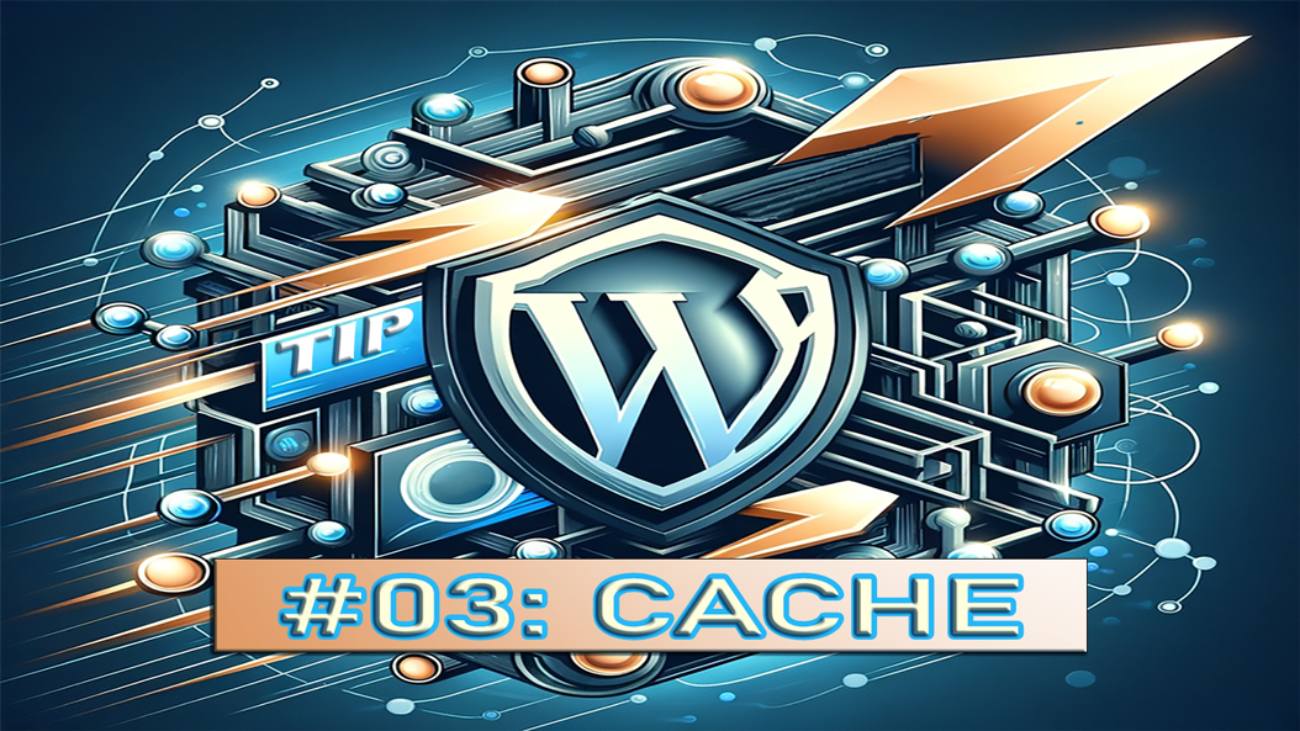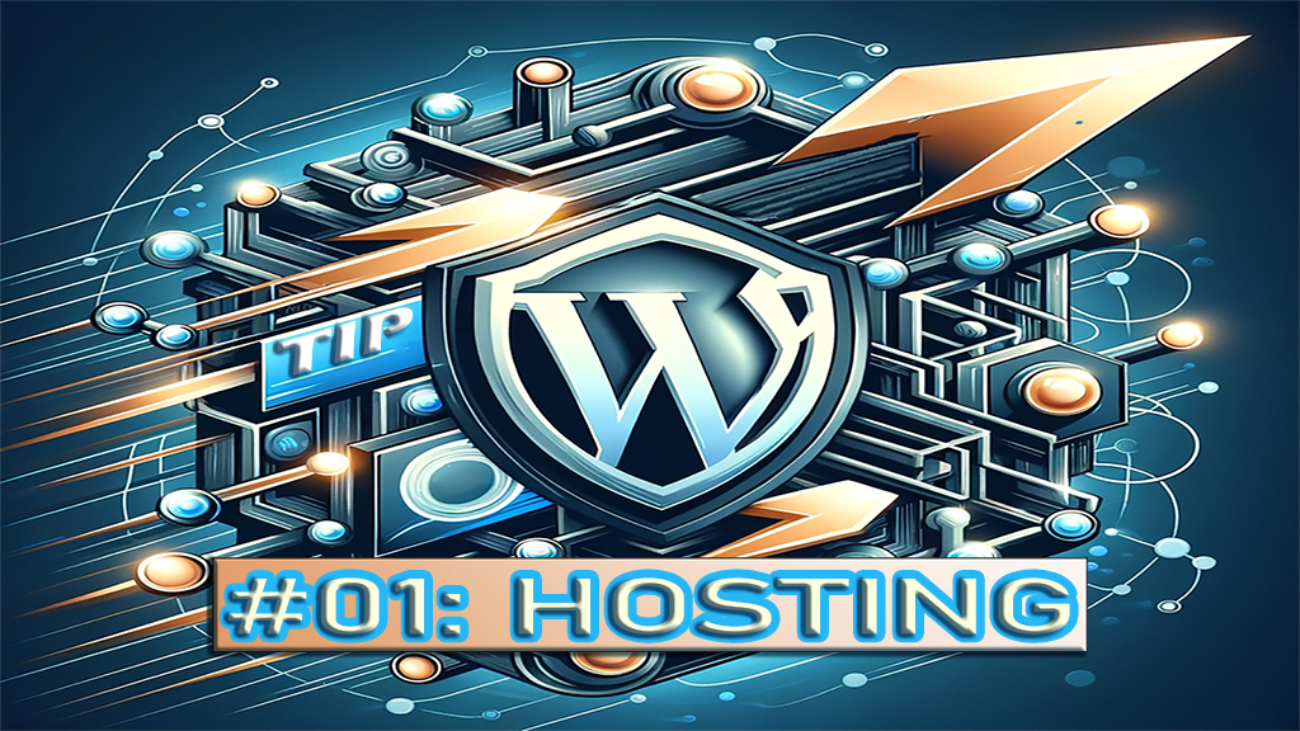Embracing WordPress Cache Optimization is a step, towards achieving an efficient and highly responsive website.
SEO Basics for Spokane and North Idaho
A Local Guide to Dominating Search in the Inland Northwest
Diving into SEO basics is your first step toward dominating the digital landscape in Spokane, Coeur d’Alene, and the broader North Idaho area. By honing in on targeted keyword research and meticulous on-page optimization, you set the stage for your website to captivate and engage. Embrace the journey through SEO’s evolving terrain, where mastering local nuances and leveraging advanced tactics propel your online presence to new heights.
Creating a robust online presence is essential in today’s digital landscape, and mastering Search Engine Optimization (SEO) is key to achieving this goal. “Advanced SEO Strategies: Elevating Your Online Presence” is a comprehensive guide designed for digital marketers and business owners keen on enhancing their visibility on the web. This blog post distills the essence of the eBook into actionable insights, highlighting the importance of both foundational SEO tactics and advanced strategies in the context of the ever-evolving digital world.
SEO is not a static field; it’s a dynamic and continuous journey of adaptation and learning. At its core, SEO is about understanding the needs of both your audience and search engines. It’s a multifaceted discipline that combines technical know-how with content marketing, user experience, and social media engagement.
Here is a series of SEO for Beginners
Foundational SEO Strategies
The journey into SEO begins with mastering the basics. Keyword research and on-page optimization form the bedrock of effective SEO. Identifying the right keywords is not just about understanding what terms your audience uses, but also grasping the intent behind their searches. This involves creating content that answers their questions, solves their problems, and provides value. On-page optimization ensures that this content is easily discoverable by search engines, using techniques such as meta tags, headings, and URL structuring.
However, SEO doesn’t stop at on-page strategies. Off-page SEO, particularly building a healthy backlink profile, is crucial for establishing your site’s authority and improving its visibility in search engine results. Similarly, technical SEO—focusing on site speed, mobile-friendliness, and secure connections (HTTPS)—is vital for both user experience and search engine rankings.
Advancing with SEO
As you solidify your SEO foundation, venturing into advanced strategies becomes necessary to stay competitive. This includes leveraging the latest in AI and machine learning, optimizing for voice search, and harnessing the power of social media.
Artificial intelligence is reshaping how search engines understand and rank content, making it essential for SEO strategies to adapt. Content needs to be more relevant, valuable, and human-centric than ever before. With the rise of voice assistants, optimizing for voice search queries, which tend to be longer and more conversational, is becoming crucial. This means focusing on natural language and question-based content that matches how people speak.
Social media, while not a direct ranking factor, plays a significant role in amplifying your content’s reach and engagement. Platforms like Twitter, Facebook, and LinkedIn can drive traffic to your site, increase brand visibility, and provide valuable social signals to search engines. Engaging with your audience on social media not only boosts your content’s performance but also builds community around your brand.
The Future of SEO
Looking ahead, the SEO landscape is set to evolve further. Semantic search will gain prominence, focusing more on the context and intent behind queries rather than exact keyword matches. This shift underscores the importance of creating comprehensive content that addresses broader topics within your niche.
The integration of emerging technologies, such as augmented reality (AR) and virtual reality (VR), into SEO strategies offers exciting possibilities for creating immersive and interactive user experiences. As these technologies become more mainstream, they’ll play a significant role in how products and services are discovered and experienced online.
Moreover, ethical SEO practices will become increasingly important. As users become more privacy-conscious, respecting their data and prioritizing transparency will not only align with search engine guidelines but also foster trust and credibility with your audience.

Implementing SEO Strategies for Success
Implementing advanced SEO strategies requires a commitment to continuous learning and adaptation. Here are some steps to ensure your SEO efforts are effective and future-proof:
- Stay Informed: The digital marketing world is fast-paced, with frequent updates and changes. Staying informed about the latest trends, algorithm updates, and best practices is crucial.
- Monitor and Optimize: Use analytics tools to track your website’s performance. Regularly review your SEO strategies and make data-driven optimizations.
- Engage and Listen: Engage with your audience across platforms. Listen to their feedback and use it to guide your content strategy.
- Focus on Quality: Always prioritize the creation of high-quality, relevant content. This is the key to SEO success, regardless of changing algorithms and technologies.
- Be Ethical: Adhere to SEO best practices and avoid shortcuts. Sustainable and ethical SEO strategies build a strong foundation for long-term success.
In conclusion, “Advanced SEO Strategies: Elevating Your Online Presence” offers a roadmap for navigating the complexities of SEO in today’s digital environment. By understanding and implementing both foundational and advanced SEO tactics, digital marketers and business owners can significantly enhance their online visibility. Remember, SEO is a journey of continuous improvement, requiring dedication, adaptability, and a focus on providing value to your audience.
Read more in our Free eBook – Advanced SEO Strategies
Advanced SEO Strategies
An essential guide that delves into modern SEO techniques, from foundational concepts to cutting-edge tactics like AI and voice search optimization. Tailored for digital marketers and business owners seeking to boost their online visibility, this eBook outlines practical, ethical strategies for navigating the dynamic SEO landscape.

Need Help on SEO in Spokane or North Idaho?
Embarking on this journey of SEO in Spokane, Coeur d’Alene, and the rest of North Idaho begins with a solid understanding of the foundational elements that drive search engine optimization. At its core, SEO is about enhancing your website’s visibility in search engine results, thereby driving more organic traffic to your site. This endeavor requires a nuanced approach, especially when targeting specific locales like Spokane and North Idaho’s key cities. Here, we delve into the critical components of SEO and how they can be tailored to the unique digital landscape of these areas.
Keyword Research: The Local Focus
Keyword research is essential for identifying terms that attract targeted traffic in Spokane, Coeur d’Alene, and surrounding areas. For a deeper dive into crafting an effective local keyword strategy, visit Why Hire Us for insights into the importance of aligning your SEO efforts with professional expertise.
On-Page Optimization: Crafting Content that Resonates

Incorporating targeted keywords into your site’s content is crucial. For detailed strategies on creating content that resonates with your local audience, explore our Content Creation services, where we outline how tailored content can significantly boost your local SEO efforts.
Technical SEO: Enhancing User Experience
Technical SEO is vital for ensuring your site is mobile-responsive, fast, and secure. For businesses in Spokane and North Idaho, understanding the technical aspects of SEO can make a huge difference. Learn more about how we can assist you with these technical elements through our services detailed on Media Buying, where we also touch on how enhancing user experience leads to better SEO outcomes.
Link Building: Establishing Local Spokane and North Idaho Authority
Establishing your site’s authority through local backlinks is a key component of SEO. Participating in community events or collaborations can offer backlink opportunities. For an in-depth look at building a strong local backlink profile, our Content Creation Services provide strategies and tips on creating content that earns valuable local links.
Social Media and Content Marketing: Engaging the Local Community
Leveraging social media to share your involvement in local events and initiatives can significantly impact your SEO. For insights into integrating social media with your content marketing efforts, visit our Media Buying Services page, which offers strategies for enhancing your digital presence and engaging the local community.
By incorporating these internal links, we ensure readers have direct access to additional resources that complement and expand upon the information provided in the post, enhancing the user experience and providing a cohesive journey through the website’s offerings.
WordPress Tip #2 – Images
Optimizing images is essential for enhancing your WordPress website’s speed and performance
10 Reasons to NOT Hire an Ad Agency
Full disclosure: I entered “10 reasons to not hire an ad agency” into ChatGPT and with millions of data points, this is what it concluded. My notes are in red.
- Cost Effectiveness
- In-House Expertise
- Brand Understanding
- Direct Consumer Engagement
- Flexibility and Control
- Speed of Execution
- Data Privacy
- Customized Tools and Software
- Unique Voice Preservation
- Avoidance of Generic Strategies

1 – Cost Effectiveness
Hiring an ad agency can be a significant financial investment. By managing advertising in-house, businesses can save on these costs, allowing for a more budget-friendly approach to marketing.
Advertising is an investment. You should always strive to get a return on said investment so it is important to spend wisely. While advertising can be expensive, it is scalable.
2 – In-House Expertise
Internal teams often have a deeper understanding of their product or service. This specialized knowledge can be crucial in creating more targeted and effective advertising campaigns.
Internal teams should know more about your products and services. A good ad agency will tap into that expertise to create effective ad campaigns.
3 – Brand Understanding
No one knows a brand better than those who work within the company. In-house teams can ensure that all marketing efforts are aligned with the brand’s core values and messaging.
Again, no one knows your brand better than you do. It is important to find an agency that takes the time to learn your brand and understands your needs.
4 – Direct Consumer Engagement
Managing advertising internally allows for direct interaction with consumers. This can lead to more personalized customer experiences and quicker feedback loops.
It is important to find an agency that works “with you” not “for you.” You should always be able to engage with your consumers.
5 – Flexibility and Control
In-house advertising provides greater control over campaigns. Companies can quickly change strategies, test new ideas, and make decisions without needing approval from an external agency.
You should not need approval from your agency – They should need yours. In most cases, an agency can make changes as quickly as you can in-house.
6 – Speed of Execution
Without the need to coordinate with an external agency, companies can execute marketing campaigns faster, responding quickly to market changes or consumer trends.
In most cases, an agency can make changes as quickly as you can in-house, sometimes even faster.
7 – Data Privacy
Keeping advertising in-house ensures that sensitive company data and customer information remain confidential and are not shared with third-party agencies.
Only use advertising platforms that ensure sensitive data remains confidential.
8 – Customized Tools and Software
Companies can invest in and customize their marketing tools and software to better suit their specific needs, rather than relying on the generic tools used by agencies.
Many agencies do use generic tools. Find an agency that offers customization.
9 – Unique Voice Preservation
There’s a risk of losing the unique voice and personality of a brand when outsourcing to an ad agency. Maintaining an in-house team helps preserve the brand’s unique identity.
Your ad agency should have a crystal clear understanding of your brand and your goals. If not, find a new one!
10 – Avoidance of Generic Strategies
Ad agencies might apply similar strategies across different clients, which can lead to generic marketing approaches. An in-house team can ensure more tailored and unique strategies.
Your ad agency should offer you exclusivity in your market. They cannot give you their best effort if they also work for a competitor.
While these are 10 reasons to avoid some ad agencies, they do not apply here at 2X Sales.
Learn more here < Why Hire Us >

WordPress Tip #1 – Hosting
Choosing the Right WordPress Hosting in Spokane and North Idaho: A Guide to Elevating Your Online Presence
Selecting the ideal WordPress hosting is crucial for any website owner in the Spokane and North Idaho regions, encompassing cities like Post Falls, Coeur d’Alene, Sandpoint, Hayden, and Rathdrum. The hosting service you choose plays a pivotal role in your site’s performance, impacting everything from loading speed to security. With the digital landscape becoming increasingly competitive, especially for local businesses and bloggers, making an informed decision can set you apart.
In the dynamic world of WordPress, where every click and page load can mark the success or failure of your website, the choice of a hosting service stands as one of the most critical decisions you’ll make. This guide delves deep into the factors that underscore the importance of this choice and offers insights into selecting a hosting provider that aligns with your site’s needs.
The Critical Role of Hosting in WordPress Success
Performance
In an age where speed is synonymous with satisfaction, your website’s performance is paramount. A study by Google found that 53% of mobile users abandon sites that take longer than three seconds to load. This statistic is a stark reminder of the performance pressures websites face and is essential for keeping your Spokane and North Idaho visitors engaged.. A robust hosting service ensures optimal loading times by leveraging high-quality hardware, advanced caching techniques, and a robust network infrastructure to keep your site swift and responsive.
Security
Cybersecurity threats are an ever-present danger in the digital landscape, with WordPress hosted sites often targeted due to their popularity. A reputable hosting provider offers layers of security measures, including firewalls, intrusion detection systems, and regular malware scans, to safeguard your site against common vulnerabilities and attacks. Furthermore, the importance of SSL certificates for secure data transmission is undeniable, with Google marking non-HTTPS sites as ‘not secure’, influencing user trust and SEO rankings.
Support
Even the most seasoned website owners encounter technical challenges. When issues arise, having access to knowledgeable and responsive customer support can be the difference between a minor hiccup and prolonged downtime. Top-tier hosting services offer 24/7 support through multiple channels, ensuring you have expert assistance whenever needed. This support extends beyond troubleshooting to provide guidance on best practices for site performance, security, and scalability.
Scalability
Your hosting service must grow with you. As your site attracts more visitors or your business expands, your hosting plan should seamlessly accommodate this growth. The best providers offer easy scalability options, allowing you to upgrade your resources without significant downtime or migration headaches. This flexibility ensures that your hosting solution remains fit for purpose, whether you’re blogging to a niche audience or running a bustling e-commerce platform. Your chosen hosting should accommodate growth, allowing you to easily upgrade your plan as your website attracts more traffic from Spokane, North Idaho, and around the world if needed.

Choosing the Right Hosting Provider: A Closer Look
- Uptime Guarantees: Uptime, the measure of a website’s availability to users, is critical. Look for providers offering uptime guarantees of 99.95% or higher, ensuring your site remains accessible to visitors around the clock.
- Speed and Performance: Evaluate potential hosts based on their performance metrics. Consider services that utilize SSD storage, offer content delivery network (CDN) integration, and support the latest technologies like PHP 7 to ensure fast and reliable website performance.
- Customer Support: Assess the quality of a provider’s customer support by reading reviews and, if possible, contacting them directly with queries. The responsiveness and expertise of their support team are indicative of the service you can expect.
- Security Measures: Comprehensive security features should be non-negotiable. Opt for hosting services that provide regular backups, malware scanning, and free SSL certificates to protect your site and its visitors.
- Scalability and Flexibility: Your chosen host should offer plans that cater to various levels of traffic and storage needs, with straightforward processes to upgrade as your site grows.
Spotlight on Top WordPress Hosting Providers
To illustrate the diversity in hosting options available for WordPress sites, let’s explore a few top providers:
GoDaddy: A household name, GoDaddy offers a variety of hosting plans suitable for beginners to advanced users. Its WordPress hosting plans include easy migration tools, automatic backups, and dedicated WordPress support.
Hostinger: With a focus on affordability without sacrificing quality, Hostinger’s WordPress hosting plans offer excellent value. Features include LiteSpeed-powered caching, free SSL, and access to a user-friendly control panel.
Bluehost: Endorsed by WordPress.org, Bluehost excels in user-friendliness and reliability. It offers a range of WordPress-centric plans, including features like one-click installs, automatic WordPress updates, and a free domain name for the first year.
SiteGround: Known for outstanding customer support and high-performance hosting solutions, SiteGround is a favorite among WordPress developers. Its managed WordPress hosting includes daily backups, free CDN, and super-cacher technology for enhanced site speed.
WP Engine: For those prioritizing hassle-free maintenance and top-notch security, WP Engine provides premium managed WordPress hosting. It stands out for its performance and security optimization, staging environments, and expert support.
Conclusion
Your choice of WordPress hosting can significantly influence your site’s success, especially in a localized market like Spokane and North Idaho. By prioritizing performance, security, support, and scalability, and considering the added benefits of local SEO, you can ensure your website stands out in Post Falls, Coeur d’Alene, Sandpoint, Hayden, and Rathdrum. Select a hosting provider that aligns with your goals to lay a strong foundation for your online presence in the Inland Northwest.

Need Help?
We do not host client sites on our servers. We believe you should always have total control over your domain and hosting accounts. This account needs to be in your name and you need admin access to it. You give us credentials to manage your site. You should be able to switch providers at any time and keep control over your assets. 2x Sales is here to help with any WordPress hosting needs. We can walk you through it or complete the set-up for you. Contact us.
Source List
- Farside Development. Why Website Performance Matters: The Importance of Speed and User Experience. https://www.farsidedev.com
- Raygun. How does website performance affect user experience? Raygun Blog. https://raygun.com/blog/impact-website-performance-user-experience/
- Designing for Performance. Performance is User Experience. http://www.designingforperformance.com
- Web Integrations. How Site Speed Affects User Experience & Search Ranking. https://www.webintegrations.co.uk/blog/how-site-speed-affects-user-experience-search-ranking/
- Google Developers. PageSpeed Insights. https://developers.google.com/speed/pagespeed/insights/
Hiring Drone Services?
Why Hiring a Licensed Part 107 Certified Pilot for Drone Services is Essential for Your Business
Introduction to Drone Services in Spokane and North Idaho
In the dynamic world of technology-enhanced business, drones have emerged as a game-changer across multiple industries. The key to leveraging this cutting-edge tool for drone services lies in employing the right expertise, specifically a Part 107 certified drone pilot. In this article, we explore why this certification is crucial, especially for businesses in Spokane, WA, and North Idaho, and how 2X Sales is positioned to meet this need.
Understanding Part 107 Certification
Part 107 refers to the Federal Aviation Administration (FAA) regulations governing the operation of commercial drones. This certification is a testament to a pilot’s proficiency in understanding and adhering to these regulations. For commercial drone operations, hiring a pilot without this certification isn’t just imprudent—it’s often illegal.
Benefits of Hiring a Part 107 Certified Pilot
Safety and Compliance: A Part 107 certified pilot ensures that all operations are conducted safely and in full compliance with FAA regulations, mitigating legal risks.
Quality of Work: Certified pilots possess the skills necessary for high-quality aerial photography and videography, enhancing the value of your projects.
Insurance and Liability: Many insurance policies prefer or require a Part 107 certification, reducing liability and often leading to more favorable insurance terms.

Real-World Drone Applications
- Real Estate: Enhanced property listings with drone footage show a significant increase in customer engagement.
- Agriculture: Drones help in efficient resource management, as seen in the 20% reduction in wastage for ABC Farms through drone-assisted crop surveillance.
- Cinematography: Award-winning films like “Sky’s Limit” extensively use footage captured by Part 107 certified pilots, showcasing their indispensable role in the industry.
- Aerial photography: Enhance the look of your advertising with an aerial view of your business and services.
Risks of Non-Compliance
Hiring uncertified pilots can lead to legal fines, safety hazards, and potential damage to your business reputation, especially in the event of accidents or non-compliance with FAA regulations.

How to Find and Hire a Certified Drone Pilot
Ensure you’re hiring a legitimate Part 107 certified drone pilot by verifying their credentials, reviewing their portfolio, and checking references. The pilot should be able to provide a copy of their part 107 certification (example in image.) Certification is good for 2 years then proof of recurrent certification training is required. All drones should be registered with the FAA and have the registration numbers displayed. This ensures professionalism and compliance in your drone-related projects.
Spokane and North Idaho Drone Services

Understanding the critical role of a Part 107 certified drone pilot is paramount in today’s business environment. At 2X Sales, we offer expert drone services by a licensed Part 107 certified pilot, tailored for clients in Spokane, WA, and North Idaho. Our commitment to quality, safety, and professionalism ensures your business needs are met with exceptional aerial footage and reliable data.
? Enhance your business operations with our professional drone services. Contact 2X Sales today for expert drone solutions in Spokane and North Idaho. Let us help you soar to new heights with our certified expertise.
For further details or to book a service, visit our website or contact us directly. Elevate your business with 2X Sales, your partner in advanced drone technology.
Traditional TV vs. OTT
Introduction to Traditional TV and OTT
The entertainment industry has undergone a significant transformation with the advent of Over-The-Top (OTT) platforms, creating a riveting dynamic against the backdrop of traditional TV (television). This shift marks not just a technological evolution but also a change in viewer habits, content consumption, and the very definition of television as we know it.
Evolution of Television Entertainment
The Rise of Traditional TV
Traditional TV, an integral part of households for decades, has played a pivotal role in shaping our cultural and social fabric. Its journey from analog to digital broadcasts reflects the technological milestones of our times.
The Advent of OTT Platforms
In contrast, OTT platforms emerged as a digital revolution, breaking free from the constraints of scheduled programming and geographical boundaries. This new medium brought with it a wave of personalized, on-demand content.

Understanding Traditional TV
Definition and Mechanics
Traditional TV operates through broadcasting signals, be it via cable, satellite, or antenna. It’s characterized by a fixed programming schedule, offering viewers a pre-determined slate of content.
Key Features of Traditional Television
Traditional TV is synonymous with live events, news broadcasts, and a communal viewing experience. It stands as a testament to a shared, collective media consumption practice.

Exploring OTT Platforms
What is OTT?
OTT platforms stream content over the internet, bypassing traditional broadcast methods. These services have redefined convenience, offering viewers a buffet of content choices accessible anytime.
How OTT is Reshaping Entertainment
OTT platforms have disrupted the traditional TV model by offering flexibility, diversity in content, and a personalized user experience, reshaping how we perceive and consume entertainment.
Content Comparison: TV and OTT
Variety and Depth in Programming: While traditional TV offers a range of channels and genres, OTT platforms boast an expansive library of global content, including niche and specialized programming.
Original Content and Syndicated Shows: OTT platforms have become powerhouses of original content, while traditional TV often banks on familiar, tried-and-tested shows and formats.
Accessibility and Convenience
On-Demand vs. Scheduled Viewing
The on-demand nature of OTT platforms starkly contrasts with the scheduled programming of traditional TV, offering viewers unparalleled control over their viewing experience.
Device Compatibility and Portability
OTT platforms excel in device compatibility, allowing viewers to stream content on phones, tablets, and smart TVs, unlike traditional TV’s limitation to the television set.
User Experience: Interactivity and Control
Viewer Control on OTT
OTT services offer a high degree of interactivity, from choosing what to watch and when to watch it, to personalized recommendations and seamless multi-device viewing.
Traditional TV’s Linear Approach
In contrast, traditional TV offers a linear viewing experience, where audiences tune in at designated times, adhering to a broadcaster-set schedule.
Cost Analysis: Subscription Models and Pricing
Pay-Per-View vs. Subscription Services
Traditional TV often includes options like pay-per-view for special events, while OTT platforms generally adopt a subscription-based model, offering various tiers and packages.
Financial Implications for Consumers
OTT subscriptions can be more cost-effective and customizable compared to traditional TV’s bundled channel packages, offering consumers more choice and control over expenses.
Impact on Social Viewing Experiences
Community Viewing on Traditional TV:
Traditional TV has long been a catalyst for communal viewing experiences, especially during live events, fostering a sense of shared experience.
Personalized Viewing on OTT:
OTT platforms, while offering personalization, often cater to individualized viewing habits, potentially diminishing the communal aspect of TV watching.
Advertising and Revenue Generation
Commercial Breaks vs. Ad-Free Options
Traditional TV relies on advertising revenue, punctuating programming with commercial breaks. OTT platforms, however, often offer ad-free viewing as part of their subscription packages.
Revenue Models in TV and OTT
The business models of traditional TV and OTT differ significantly, with OTT platforms exploring innovative monetization strategies, including tiered subscriptions and ad-supported content.
Technological Advancements and Future Trends
Smart TVs and Integration
The integration of OTT apps into smart TVs is a game-changer, offering a unified platform that blends traditional TV and streaming services.
Future of Streaming Technologies
Emerging technologies and increasing internet penetration are poised to further boost the growth and evolution of OTT services, potentially leading to more immersive and interactive content experiences.
The Global Reach of OTT and Traditional TV
Regional Availability and Limitations
Traditional TV, constrained by geographical boundaries, contrasts with the global reach of OTT platforms, though they too face challenges with content licensing and regional availability.
Worldwide Audience and Cultural Impact
OTT platforms cater to a global audience, offering diverse content that transcends cultural and linguistic barriers, unlike traditional TV’s regional focus.
Legal and Regulatory Aspects
Content Censorship and Ratings
Traditional TV and OTT platforms navigate a complex web of content censorship and ratings, with regulations varying significantly across regions and platforms.
Copyright Issues in TV and OTT
Navigating copyright laws poses unique challenges for both mediums, particularly for OTT platforms due to their digital nature and global reach.

Consumer Behavior and Preferences
Shifts in Viewing Habits
The rise of OTT platforms has led to a noticeable shift in viewing habits, with consumers increasingly favoring on-demand content and binge-watching.
Audience Demographics and Preferences
OTT platforms tend to attract a younger demographic with their diverse and innovative content offerings, while traditional TV continues to appeal to older audiences and certain niche markets.
Challenges and Limitations
Internet Dependency for OTT
The reliance of OTT platforms on stable internet connectivity is a notable limitation, impacting accessibility in regions with limited internet infrastructure.
Limitations of Traditional Broadcast TV
Traditional TV is constrained by its dependence on broadcast schedules and fixed programming, offering less flexibility in content choice and viewing times.
Traditional TV vs. OTT: The Future
Predictions and Speculations
The future of television lies in a hybrid landscape, where traditional TV and OTT platforms coexist, each adapting to changing consumer preferences and technological advancements.
Adapting to Changing Consumer Needs
The evolution of both mediums will be dictated by their ability to adapt to the evolving needs of viewers, leveraging technology to enhance content delivery and user experience.
FAQs
- What sets OTT platforms apart from traditional television broadcasting? OTT platforms offer on-demand, personalized content that can be accessed on multiple devices. They differ from traditional television, which follows a scheduled programming format and requires a cable or satellite connection.
- In terms of cost, how do OTT platforms compare with traditional TV? OTT platforms typically operate on subscription-based models, which can be more cost-effective compared to traditional TV’s bundled channel packages. OTT offers a variety of content choices at potentially lower costs.
- Is it possible to access live TV on OTT platforms? Yes, some OTT platforms provide access to live TV, offering a mix of live sports, news, and entertainment, similar to traditional TV but over the internet.
- What internet speed is necessary for smooth streaming on OTT services? For standard-definition content, a minimum of 3 Mbps is recommended, while high-definition content requires at least 5 Mbps. For 4K content, speeds of 25 Mbps or higher are ideal.
- Do OTT platforms generally offer higher-quality content than traditional TV? OTT platforms are recognized for their high-quality, original content, often attracting a broad audience with diverse and compelling programming, which competes strongly with traditional TV content.
- Is it likely that OTT platforms will eventually replace traditional TV? While OTT platforms are significantly influencing the entertainment landscape, they are unlikely to completely replace traditional TV shortly. Both mediums are expected to coexist, each serving different audience preferences and needs
Conclusion: The Changing Landscape of TV Entertainment
The tussle between Traditional TV and OTT is a fascinating chapter in the evolution of media consumption. As technology advances and viewer preferences evolve, we are set to witness an even more integrated and diverse entertainment landscape.
Additional Sources:
- “The Future of Television: The Impact of OTT on Video Production Around the World” – Boston Consulting Group: Discusses how OTT platforms are transforming traditional broadcast TV and the entire television and filmed entertainment landscape. Read more
- “The Rise of the OTT Platform and its Impact on the Entertainment Industry by 2040” – Blackcoffer Insights: Explores the rise of OTT platforms and their potential implications by the year 2040. Read more
- “What is OTT? Exploring the Rise of OTT and Its Impacts on the Entertainment Industry” – Castr: Discusses the growth of OTT platforms, their impact on the entertainment industry, and changes in content consumption. Read more
- “OTT Platforms are Winning the War Against Traditional TV in the US” – Business Insider India: This article reports on the increasing dominance of OTT platforms over traditional TV in the United States. Read more
DIY Logo Design Surprise
Transforming Brands with Logo.com: A Personal Journey in Logo Creation
Hey there, fellow entrepreneurs and brand enthusiasts! Today, I’m excited to share my amazing journey of brand transformation with Logo.com. As an ad agency owner, I understand the pivotal role of a logo in branding, and my experience with Logo.com was nothing short of phenomenal. Let’s dive into how this platform revolutionized my branding process, without even costing a dime!
The Magic of Logo.com
Logo.com is a game-changer for anyone looking to create a professional logo. This intuitive platform uses advanced machine learning algorithms to generate a plethora of professional-looking logos in mere minutes. Imagine inputting your business name, adding a slogan, and voilà – you have a range of logos to choose from! You can customize everything, from icons to fonts and color palettes, ensuring your logo perfectly aligns with your brand’s identity.
A Treasure Trove of Features – For Free!
What blew me away was the sheer number of features available for free. You get high-resolution logos, a variety of formats, and even different color variations. The cherry on top? If you fall in love with a particular font that’s not on your computer, you can download it directly from Logo.com. This flexibility and accessibility make Logo.com a standout choice for startups, consultants, bloggers, and virtually any business seeking to craft a unique brand identity.
User Experience: Fun and Straightforward
The process of creating a logo on Logo.com is incredibly user-friendly. It’s designed for everyone – whether you’re a design novice or a tech guru. You select a template, customize it to your heart’s content, and download your brand new logo in high-resolution formats like PNG, SVG vector files, and more. And guess what? It’s all free!
Going Pro: Optional, but Worth It
While the free version is remarkably comprehensive, Logo.com also offers a ‘Pro’ subscription. This includes Stitch, their in-house brand-building tool with premium templates and more advanced features. It’s a fantastic option for those looking to take their branding to the next level.
Building More than Just Logos
Logo.com is more than just a logo maker. It’s a brand-building powerhouse. From creating a stunning logo to launching your brand with social media kits and website builders, it’s a one-stop shop for all branding needs. The ability to easily modify or create new designs ensures your brand stays fresh and relevant.
Conclusion:
In summary, Logo.com is a versatile and powerful tool that empowers you to create a brand identity that truly resonates with your audience. My experience with their free platform was exceptional, offering everything needed for a professional, cohesive brand presence. Whether you’re starting from scratch or rebranding, Logo.com is a resource you don’t want to miss.
Additional Help
This platform is a great resource for the DIY person. However, if you find yourself needing additional help with your logo or branding in general, we are here to help. Contact us for a free consultation.
210 Social Media Hooks
Unlock Engagement: The Ultimate Guide to Crafting Irresistible Social Media Hooks
Why Hooks Matter
In the bustling social media landscape, your audience is bombarded with endless streams of content. A hook is your first (and sometimes only) chance to capture their attention. It’s not just about making a first impression; it’s about making a lasting one that compels the reader to engage with your content.
The Art of Crafting Hooks
Creating an effective social media hook involves a blend of creativity, understanding your audience, and aligning with your brand’s voice. It’s about crafting a message that speaks directly to the interests, needs, and emotions of your audience. A good hook is concise, clear, and provocative enough to spur curiosity.
Categories of Hooks
- Engagement & Interaction: These hooks are designed to directly prompt audience participation – be it through comments, shares, or reactions. They are vital for fostering a sense of community and conversation around your content.
- Motivational & Inspirational: Uplifting and encouraging, these hooks are perfect for instilling positivity and a can-do spirit among your audience. They resonate well in personal development and lifestyle niches.
- Tips, Tricks, & Advice: Ideal for educational or informative content, these hooks provide value through actionable advice, making them a go-to for how-to guides and professional insights.
- Personal Insights & Stories: By sharing personal experiences or stories, these hooks create a connection with the audience, adding a human touch to your content.
- Thought-Provoking & Controversial: These hooks challenge the norm and stimulate discussion, great for content that aims to explore new perspectives or spark debate.
- Fun & Interactive: Light-hearted and engaging, these hooks are perfect for social media platforms where entertainment and playfulness are key.
- Industry-Specific & Professional: Tailored to specific professional fields or industries, these hooks are excellent for niche audiences, offering specialized insights or updates.
- Lifestyle & Well-being: Focused on personal betterment, health, and lifestyle, these hooks appeal to audiences interested in improving their quality of life.
Engagement & Interaction
- Can you relate? Comment with ______ [insert your favorite emoji].
- Comment FIRE if you want ________ [benefit or result] for yourself!
- Tag a friend who needs to see this.
- Which side of _______ [issue] are you on? A) _______ or B) _______?
- Share your story about _______. Let’s connect.
- Who else loves _______? Show some love!
- Drop an emoji that describes your _______.
- Share your best tip for _______.
- Caption this: _______ [image or situation].
- What’s your favorite _______? Comment below!
- Join the conversation on _______.
- Vote for your favorite: _______ vs. _______.
- Double-tap if you agree!
- Guess what’s in the next slide!
- Raise your hand if you’ve ever felt like _______.
- Ever ask yourself, how can I improve my _______?
- [thing] really doesn’t have to be complicated.
- Want to know something mind-blowing? _______.
- Wondering what happened when I committed to _______ for [time frame]?
- If I had to start all over again in [field], here’s what I would do differently.
- If you have one [goal], start doing this!
- I can’t believe I used to overlook [something important], but now I swear by it. Here’s why.
- Struggling with your [challenge]? You’re going to want to save this.
- What to do after [event] disrupts [results].
- Brace yourself for a jaw-dropping transformation in my [aspect of life or work].
- Did you know that [statistic] of people struggle with [common issue]?
- Which [category] resonates with you? A) [option A] or B) [option B]?
- [number] steps to [outcome] that [benefit].
- Breaking news: [topic].
- I’ll tell you a secret no one has ever told you about [insider knowledge].
These hooks are designed to boost engagement by prompting followers to interact directly with the post, be it through comments, tags, sharing personal stories, or expressing opinions. They are versatile and can be adapted to various topics and audiences.
Motivational & Inspirational
- You need to hear this today: _______ [uplifting or motivating message].
- Need a boost? Here’s a quick dose of _______ [positive affirmation or encouragement].
- Today’s mantra: _______ [uplifting message]. Pass it on!
- Start your day with this powerful affirmation: _______.
- Embrace the journey: _______ [motivational message].
- The key to unlocking your potential is _______.
- Believe in yourself: Here’s why _______.
- Transform your mindset with this simple trick: _______.
- Your daily dose of inspiration: _______.
- Chase your dreams. Here’s how: _______.
- The power of positivity: _______.
- Transform your mindset with this simple trick: _______.
- Your daily dose of inspiration: _______.
- Never underestimate the power of _______.
- Chase your dreams. Here’s how: _______.
- The secret to _______ [success/happiness/etc.] is _______.
- One thing I’ve learned about [life, success, etc.] is _______.
- Remember, every day is a chance to _______.
- The most empowering moment is when you realize _______.
- Keep pushing forward. The best is yet to come: _______.
- The strength you need is already inside you. Just remember _______.
- For anyone who needs to hear this: _______.
- Today’s goal: _______. You’ve got this!
- The moment you start believing in yourself, _______.
- Rise and shine: today’s a new opportunity to _______.
- The journey to [goal/success] starts with a single step: _______.
- Don’t be afraid to dream big: _______.
- You are capable of more than you know. Just start with _______.
- Every day brings new possibilities. Today, focus on _______.
- Your potential is limitless. Remember that when you _______.
These hooks aim to inspire, motivate, and uplift the audience. They can be filled in with specific messages, quotes, or personal insights that resonate with the target audience, making them feel encouraged and supported.
Tips, Tricks, & Advice
- _______ ways to level up your _______ game!
- _______ hacks to supercharge your _______ game!
- Are you struggling with _________? This should solve your problem!
- Having trouble with _______? This post is your one-stop solution!
- How to improve your _______? Let me show you the way!
- The secret to mastering _______ is _______.
- Pro tips for _______ to achieve _______ without breaking a sweat!
- Essential tips for all _______ out there.
- If you’re in the _______ industry, you need to know this!
- For my fellow _______ professionals, try this out!
- Changing the game in the _______ industry.
- How to stay ahead in the _______ field.
- _______ industry: Expectations vs. Reality.
- The future of _______ industry looks like this.
- Common myths in the _______ industry debunked.
- The biggest trends in _______ industry right now.
- If you’re a fan of _______, get ready to elevate your game with this expert tip!
- This is what I love about _______ industry.
- _______ secrets revealed!
- Tips for _______ to achieve _______ with minimal stress!
- It really doesn’t have to be complicated. Simplify your [process or task]!
- Tips for [task] to achieve [positive outcome] with minimal stress!
- Feeling a bit stuck? Let’s chat about overcoming [challenge].
- Fun fact: Did you know today is [quirky holiday]?
- If I had to start all over again in [area], here’s what I would focus on.
- You need these [resources] to make life easier!
- I’ve always been [trait], but [experience].
- Calling all [interest group]: Elevate [topic] with this secret technique!
- See what happened when I decided to [action] for a month straight.
- The most valuable lesson life taught me and how it can transform your [area].
These hooks are designed to offer practical advice, useful tips, and industry-specific insights, aiming to provide value and help to the audience in various areas of interest.
Personal Insights & Stories
- If I had to start all over again, my first step would be _______.
- Does this sound like you? _______ [common challenge or experience].
- What happened when I __________.
- Can I share a secret? The best ________ [topic] strategy is _______.
- Ever wonder how to improve your _______ [specific aspect]? Let me show you the way!
- Why I don’t believe in _______ [common belief or practice]. Here’s my take.
- Comment something you’ve heard about ________ that might be a myth!
- Unpopular opinion: _______ [bold statement or perspective].
- Don’t you just love it when _______ [positive experience]?
- Something I’ve learned about _______ [relevant topic] recently.
- Lessons I learned from overcoming blunders in _______ [specific situation or activity].
- Sneak peek: something exciting is coming soon!
- This is not a joke. _______ [serious or surprising statement].
- _______ [number] things I learned this year that completely changed my perspective on _______ [topic].
- I can’t believe I’m sharing this behind-the-scenes look at ______.
- People love to ask this question: ________?
- I wasn’t going to share this, but I couldn’t resist: _______ [share a surprising fact or revelation].
- I can’t believe I used to overlook _______ [something important], but now I swear by it. Here’s why.
- Struggling with your _______ [challenge]? You’re going to want to save this.
- What to do after ________ [event] disrupts _______ [results].
- Brace yourself for a jaw-dropping transformation in my _______ [aspect of life or work].
- Did you know that _______ [statistic] of people struggle with _______ [common issue]?
- Which _______ [category] resonates with you? A) _______ or B) _______?
- _______ [number] steps to ________ [outcome] that _________ [benefit].
- Breaking news: _______ [topic].
- I’ll tell you a secret no one has ever told you about _______ [insider knowledge].
- This is what I love about _______ [aspect of your industry or interest].
- If you’re a fan of _______, get ready to elevate your game with this expert tip!
- Today’s mantra: _______ [uplifting message]. Pass it on!
- Hey, fellow _______ [enthusiasts]! I see you hustling. Here’s a little pick-me-up.
These hooks are intended to share personal experiences, insights, and stories, fostering a deeper connection with the audience by offering a glimpse into the poster’s life, thoughts, or professional journey.
Thought-Provoking & Controversial
- Hot take: _______ [Controversial topic]. What’s your opinion?
- Unpopular opinion: _______ [bold statement or perspective].
- Here’s a viewpoint you might not have considered about _______.
- Let’s discuss the unspoken side of _______.
- Challenge the norm: _______.
- A perspective on _______ you haven’t heard before.
- _______: Overrated or underrated?
- The truth about _______ that nobody talks about.
- Rethinking common beliefs about _______.
- Let’s break the taboo around _______.
- Is it just me, or is _______ a bit controversial?
- Opening up the conversation on _______.
- Ever ask yourself, __________?
- What do you think of this? _______ [thought-provoking question or statement].
- Did you know that ____ [number] % of __________ [interest group] believe in __________?
- How to make the most of your _______ [time, resources, etc.] in just _______ [short time frame].
- Stop scrolling! You won’t believe what happens next.
- _________ [specific group], don’t _______. Find out why.
- I want to be extremely honest with you about ________.
- We just experimented with _______ [new approach], and the outcome is mind-blowing!
- It really doesn’t have to be complicated. Simplify your _______ [process or task]!
- Swipe left to reveal a surprise.
- Tips for _______ [task] to achieve _______ [positive outcome] with minimal stress!
- Feeling a bit stuck? Let’s chat about overcoming _______ [common challenge or experience].
- Fun fact: Did you know today is _______ [quirky holiday]?
- If I had to start all over again in ______, here’s what I would focus on.
- You need these _______ [helpful tools or resources] to make life easier!
- I’ve always been _______ [trait or preference], but _______ [something unexpected].
- Calling all _____________ [interest group]: Elevate __________ [topic] with this secret technique!
- See what happened when I decided to _______ [take a specific action] for a month straight.
These hooks are crafted to stimulate thought, spark debate, or challenge existing perspectives, encouraging audiences to engage in deeper reflection and conversation about various topics.
Fun & Interactive
- Join our virtual scavenger hunt: Find _______.
- Caption contest: Best one wins _______!
- Fill in the blank: I love _______ because _______.
- Vote for your favorite: _______ vs. _______.
- Guess the _______: The first correct answer wins!
- Finish the story: _______.
- Create your dream _______ and share it.
- Emoji riddle: What’s this _______?
- Photo Challenge: Show us your best _______.
- Share your version of _______.
- Who can relate to this? [funny or relatable meme or situation].
- Find the hidden [item or detail] in this picture!
- Trivia time: Do you know the answer to _______?
- Let’s play a game: Two truths and a lie about _______.
- What’s your [funny or quirky category] name? Use this formula: [funny formula].
- Solve this puzzle: [provide a puzzle or riddle].
- This or That: Choose your favorite in each pair!
- Describe your day using only emojis.
- What’s the funniest thing that ever happened to you with _______?
- Sing the lyrics if you know this song: [provide a song line or two].
These hooks are designed to be entertaining and engaging, encouraging users to participate in playful and interactive content. They work great for building a community feeling and increasing user interaction on social media platforms.
Industry-Specific & Professional
- Calling all [industry professionals]: Discover the latest trend in [industry]!
- [Professionals in a specific field], how do you tackle [common professional challenge]?
- Essential skills every [job title] needs to master: _______.
- Breaking down the [industry] updates for this week: What you need to know.
- [Industry] insiders, what’s your take on [recent industry development]?
- Networking tips for [professionals in a specific field].
- The future of [industry] looks like this: [describe a trend or prediction].
- How [new technology or method] is revolutionizing [industry].
- For [professionals in a specific field]: Strategies to boost your [specific skill or area].
- The biggest challenges facing [industry] today and how to overcome them.
- How to stay ahead in the [specific profession or industry].
- [Industry-specific problem]: How do you solve it?
- The evolving role of [specific job title] in [industry].
- Key trends shaping the future of [specific industry].
- Industry debate: [pose a controversial topic or question related to the industry].
- What every [job title] should know about [specific aspect of the job or industry].
- The impact of [recent event or change] on [industry].
- Pioneering women/men in [industry]: Their contributions and legacy.
- [Professionals in a specific field], share your success story with [specific task or challenge].
- The most underrated skills in [industry]: What are they?
These hooks are tailored to engage professionals and enthusiasts in specific industries, offering insights, discussions, and information relevant to their field. They are great for fostering professional dialogue, sharing expertise, and staying updated with industry trends.
Lifestyle & Well-being
- Simple life hacks for a better _______.
- Wellness tips: How to improve your _______.
- Embrace a healthier lifestyle with these steps: _______.
- Secrets to a balanced _______.
- Daily routines to boost your _______.
- Mindfulness practices for every _______.
- Achieving harmony in _______.
- Simple pleasures to enhance your _______.
- Building a sustainable _______ lifestyle.
- Nourishing your _______ for better well-being.
- The key to a happy and fulfilling life is _______.
- How to create a peaceful and productive morning routine.
- The best self-care practices for [specific situation or time, e.g., busy weeks].
- Fitness tips for beginners: How to start your journey.
- The importance of mental health days and how to spend them.
- Nutritional advice for a healthier diet: What to include and avoid.
- How to effectively manage stress in your daily life.
- Yoga for beginners: Starting your journey to wellness.
- The power of gratitude: How to start a gratitude practice.
- Eco-friendly living tips: Simple ways to reduce your environmental impact.
These hooks focus on various aspects of personal lifestyle and well-being, offering advice, tips, and ideas to improve everyday living, health, and personal fulfillment. They’re excellent for engaging audiences interested in self-improvement and healthier lifestyles.
Summary
Harnessing the Power of Hooks
In conclusion, social media hooks are a powerful tool in your content arsenal. They are not just about grabbing attention; they are about creating a doorway for your audience to walk through and engage with your content on a deeper level. By categorizing and understanding the various types of hooks, you can tailor your approach to fit your audience’s preferences and your content goals. Remember, the right hook can turn a casual scroller into an engaged follower and a loyal customer. So, unleash the power of hooks and watch your social media engagement soar!









